Have you been avoiding making videos for your business? Wondering how to feel more comfortable in front of a camera?
In this article, you'll discover how to record videos more confidently so you can improve your engagement and sales.
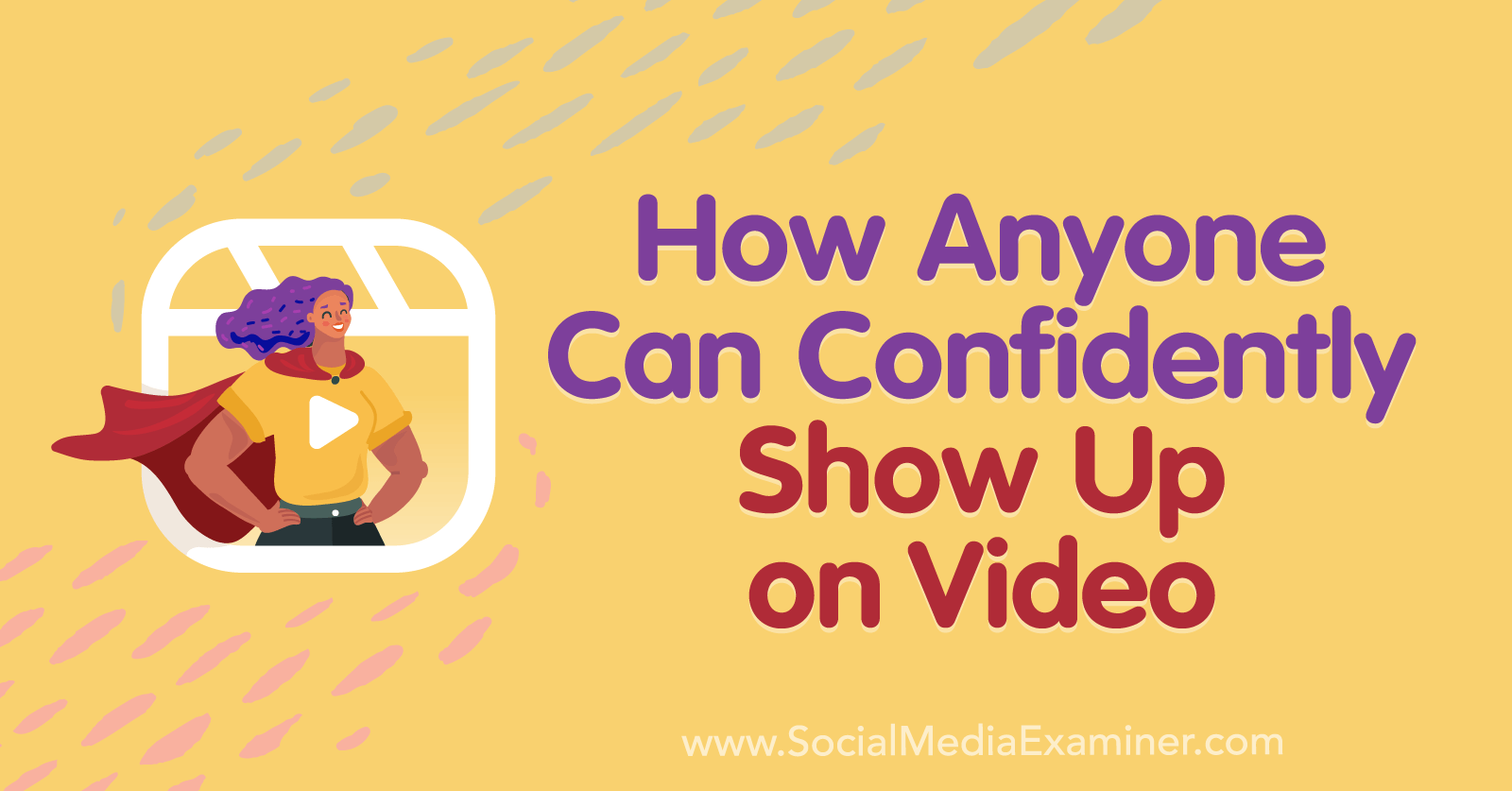
Video Brings a Human Element to Your Marketing
You've probably been hearing marketing strategists pushing the importance of adding video to your marketing strategy for a long time. The truth is, a lot of branding and marketing experts have been pushing video for years. As a marketing format, video is powerful.
First, video gives consumers something visual to connect to. Second, video is prioritized in a lot of social media feeds. In fact, Mark Zuckerberg instructed his team at Facebook to focus heavily on video. Every social media platform is placing a major focus on video, including those platforms that haven't been known for video traditionally. But in addition to this, video is human.
The human element in video is part of what sets it apart as such a strong marketing tool. It helps you make a connection with your audience in a way that doesn't happen with just images or photographs. And because many businesses and marketers haven't adopted video yet, adding video to your marketing strategy is a powerful way to stand out.
If you're ready to incorporate video in your marketing, here's how you can feel more confident on camera and deliver value to your audience.
#1: How to Overcome 3 Fears About Creating Video
There are several reasons that marketers may choose to ignore such a powerful marketing tool, and often those reasons are centered around fear.
Let's dig through some of the more common fears and how to overcome them.
Fear of the Equipment or Tech Stack
One of the first questions marketers ask when discussing putting together a video marketing strategy is the tech stack. What kind of equipment do they need to purchase?
There's an overwhelming number of choices out there, with cameras ranging in price from $50 to thousands of dollars, lighting choices, microphones, audio and video mixers… It's no wonder navigating these choices starts to feel daunting.
As you dig deeper into the world of video, one thing you begin to realize is that you don't need to aim for perfection. There's no reason to worry about getting the best camera, the ideal lighting setup, or studio-quality sound. Consumers today want authentic videos they find engaging.
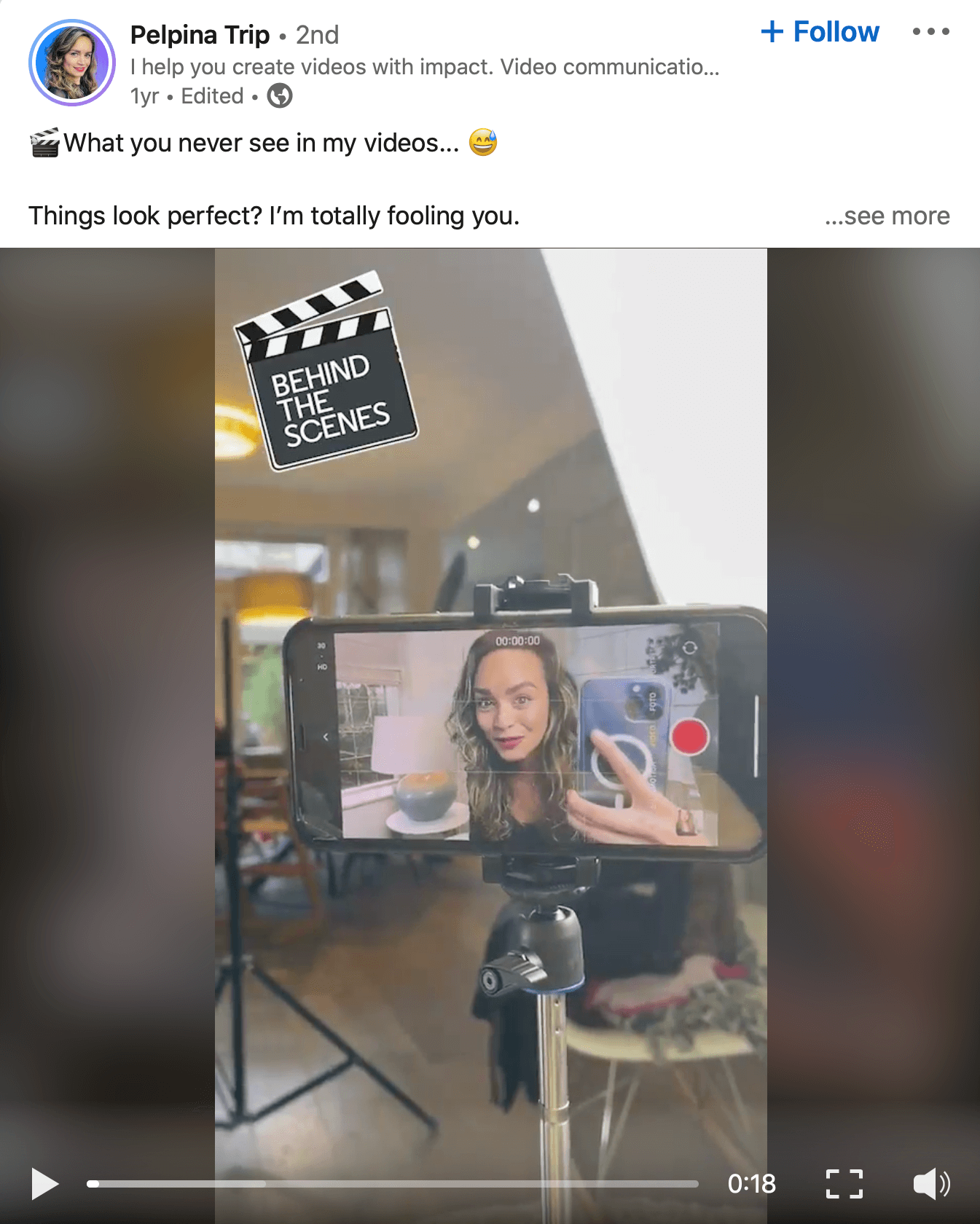
Fear of Public Speaking
This fear might not feel quite so relevant since we're not talking about speaking in front of a group of people but the same fears people have heading up onto a stage to talk seems to apply to people getting ready to sit in front of the camera. The only difference is you're looking into a lens that represents the world you can reach with all eyes on you.
There's an expectation for delivery and perfection. You may get nervous about the weight of these expectations, wondering if you look okay, sound okay, and if you're going to get judged negatively for something. And while presentation and presence of mind are important, authenticity is much more important.
The judges on reality competition shows like American Idol say it to their competitors all the time: you sound too perfect, too rehearsed. Of course you want to feel rehearsed and confident in the materials you're presenting but you don't want to sound unrelatable or unapproachable.
Get World-Class Marketing Training — All Year Long!
Are you facing doubt, uncertainty, or overwhelm? The Social Media Marketing Society can help.
Each month, you’ll receive training from trusted marketing experts, covering everything from AI to organic social marketing. When you join, you’ll also get immediate access to:
- A library of 100+ marketing trainings
- A community of like-minded marketers
- Monthly online community meetups
- Relevant news and trends updates
Audiences aren't following you because you sound perfect; they're following you because they get a glimpse of your authentic self through video. And that's what they're after—that part of you they can relate to and approach and trust to help them.
Remember who you're serving on the other side of that camera lens. If it makes it easier on your nerves, imagine that you're sitting in a room speaking to one person who matches your viewer's avatar rather than the world or a large faceless audience.
Fear of Not Knowing What to Say
While we're talking about letting go of not being perfect, we're certainly not saying to start recording on your camera with no plan at all. A lot of times, the fear of not knowing what to say can be resolved by having a plan. You'll come across better, deliver a more compelling message, and be more confident on camera.
Define Your Audience
First, you have to really know and understand your audience. Put yourself into their shoes, get to know them, and understand why they're following you. If you can serve your audience with your mission, answer, or solution, then you can create better content for them.
You'll quickly realize that viewers aren't showing up to watch you because they want to judge you. They're showing up because they believe you have an answer to their question or a solution to their problem. As long as you can deliver that answer or solution authentically, they'll stick around and watch more of you.
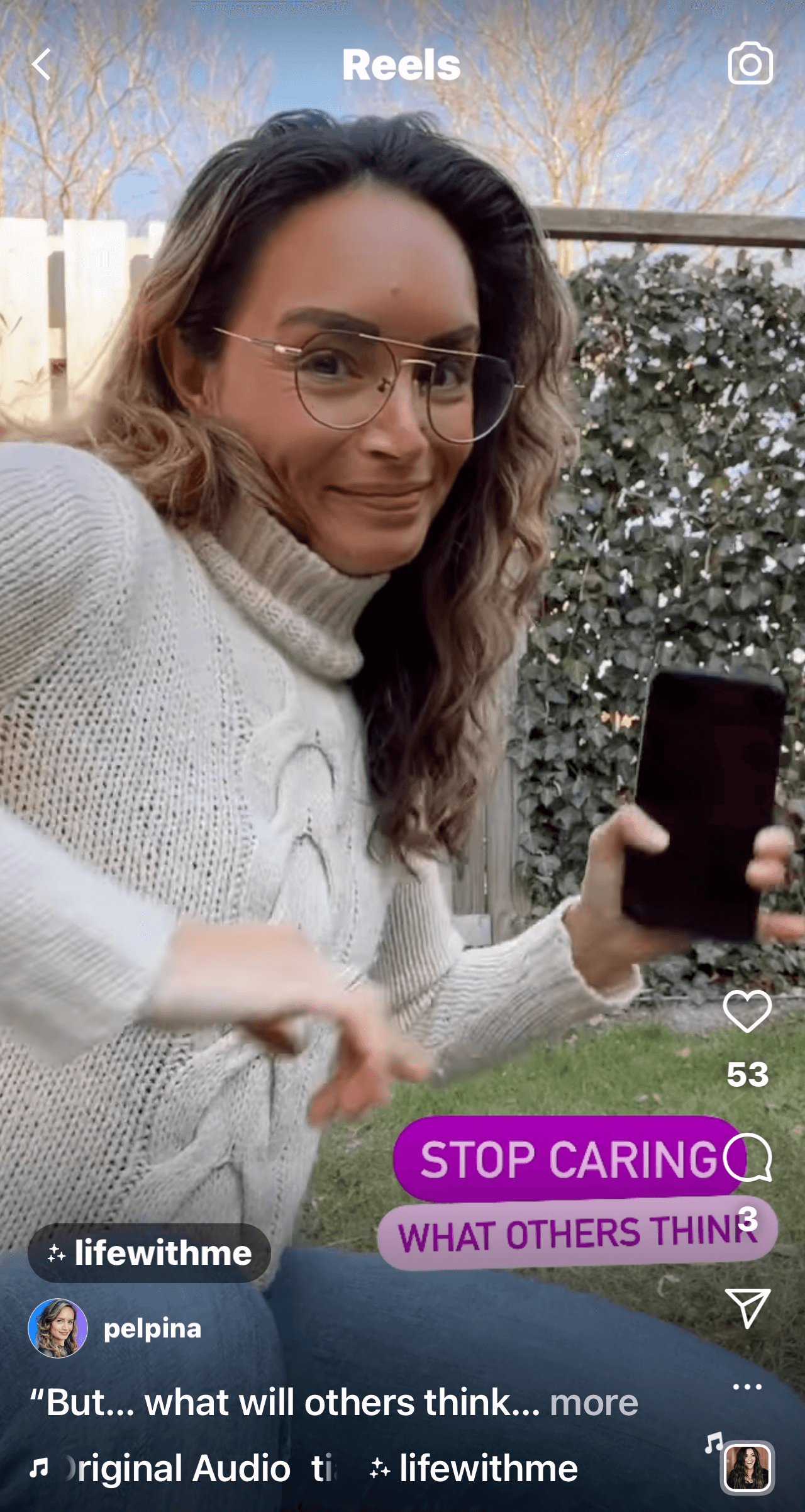
And you'll really learn this lesson after you mess up a couple of times. After you freeze on camera, spit out the wrong word, or get tongue-tied, you'll realize that no one is laughing maliciously in judgment. In fact, if you leave those types of tongue twisters in there, you may even find increased engagement as people can finally relate to the real you.
The more you go through this, the better your brain becomes prepared for the unexpected. It's kind of like training yourself to speak authentically whenever the camera is rolling. The more willing you are to roll with the punches, eventually you'll realize that's what people want—your authentic voice that can adjust and adapt when something happens and still deliver value.
Understand the Platform
The second part of your plan is to decide what the overall format and length of your video content will be. Take into account where your audience will consume it. Here are some tips for tailoring video for different social platforms:
- LinkedIn: You probably want to create shorter videos, maybe 1 to 2 minutes long, and they should probably be formatted as a square.
- Instagram and TikTok: The vertical layouts are probably more appropriate. You can experiment with either shorter, more engaging videos or go slightly longer for a different effect.
- Facebook and YouTube: Typically, you want to use a horizontal layout and make your content a bit longer and more in depth.
Determine Your Purpose
The last thing to figure out is your purpose. What would you like viewers to do, think, or feel after they watch your video? This is what makes video marketing so powerful. If you know who your audience is and where they're going to watch your video, then you can focus on the purpose behind that video. This clarity helps you put together your message and your call to action.

Discover Proven Marketing Strategies and Tips
Want to go even deeper with your marketing? Check out the Social Media Marketing Podcast! Publishing weekly since 2012, the Social Media Marketing Podcast helps you navigate the constantly changing marketing jungle, with expert interviews from marketing pros.
But don’t let the name fool you. This show is about a lot more than just social media marketing. With over 600 episodes and millions of downloads each year, this show has been a trusted source for marketers for well over a decade.
#2: Get Into the Right Mindset Before Hitting Record
Clearly, a lot of the fears around video marketing center on mindset. Things like buying the wrong equipment, having the wrong lighting set up, and saying the wrong things can all be resolved over time with adjustments to mindset. And the nervous energy that usually accompanies these concerns can lessen over time—not just from video to video, but even talking in one video for several minutes.
There are several things you can do to put yourself in the right mindset before hitting record. One common practice is to do a superhero pose—standing straight up with your hands on your hips and taking a deep breath. This can help you feel more empowered right before you start recording your video or livestream.
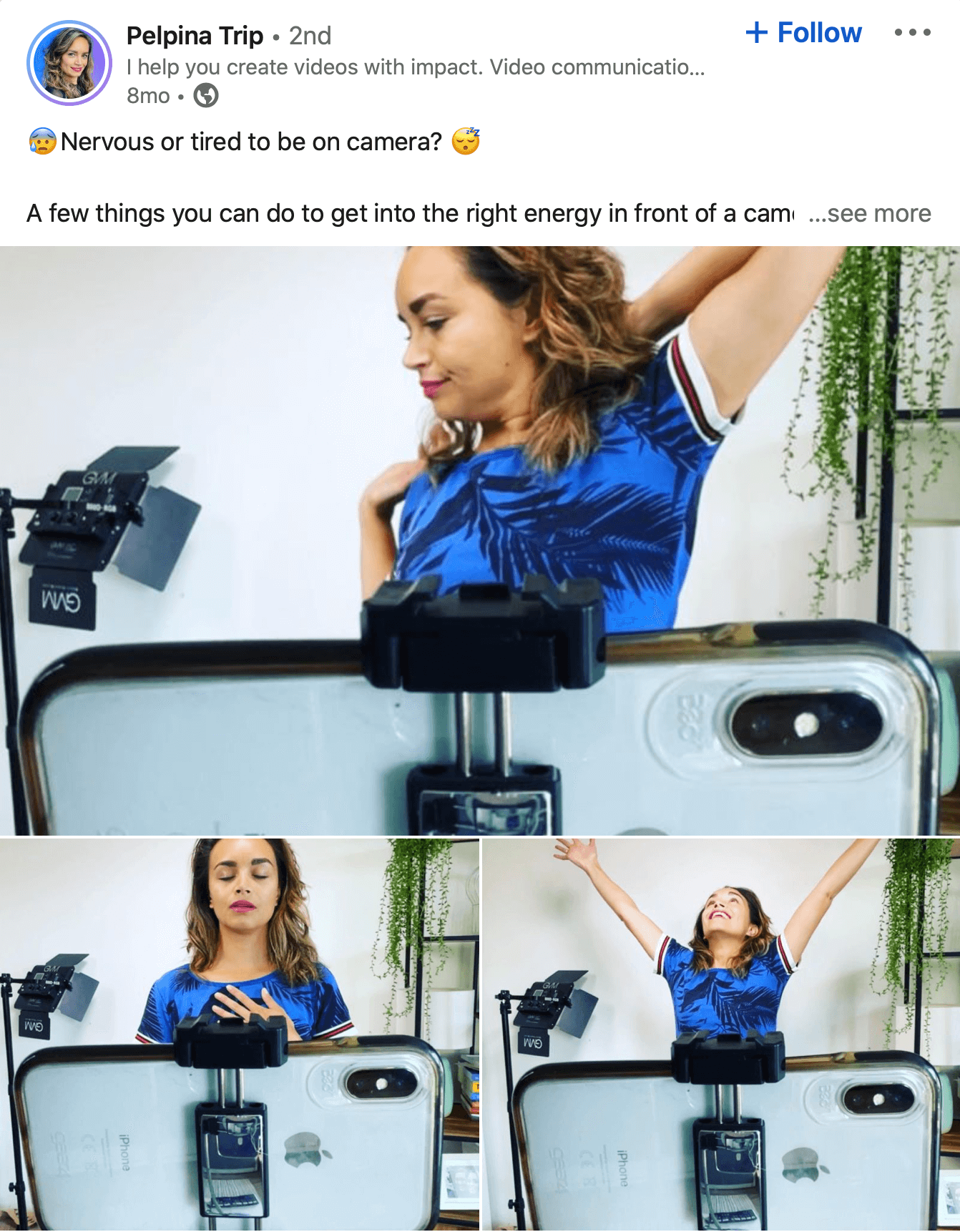
It's also helpful to take long, deep breaths. Sometimes when you're nervous, your breath can become shallow, which can make your voice take on a slightly higher pitch. Nervous energy will come through in your video so you can either make it a piece of the content or work to resolve the nervous energy through the video itself.
Using the nervous energy itself might entail acknowledging your energy at the beginning of the video. Let your audience know that you're nervous, tired, or excited, and spell out the value that they receive from it. This makes you relatable in their eyes because we can all remember a time when we were so excited about a project that we lost sleep.
If you're not interested in using the energy you have, work on transforming that energy into the more confident energy you're after. In fact, transforming your energy is a lot easier than it sounds.
First, as we mentioned earlier, make sure you're breathing deeply. Shallow breaths will heighten the nervous energy and the sound of those nerves through your voice. Slow down your breathing and make sure that you're breathing deeper and slowing your words to help exude the confidence you're trying to build.
Most people also become more comfortable as they begin talking. Think of the last time you had an interview, how nervous you were at the beginning, but once you got into the meat of your conversation, you were able to focus less on your nerves and more on the topic of conversation itself. The same holds true when you're sitting in front of a camera. The more you talk about the topic at hand, the less you'll be focused on your nerves. So start talking.
You may even start recording the camera a few minutes early as you start talking. This is especially helpful if you're interviewing a guest and are a little nervous about how the interview is going to come out. Start the recording and then start the conversation.
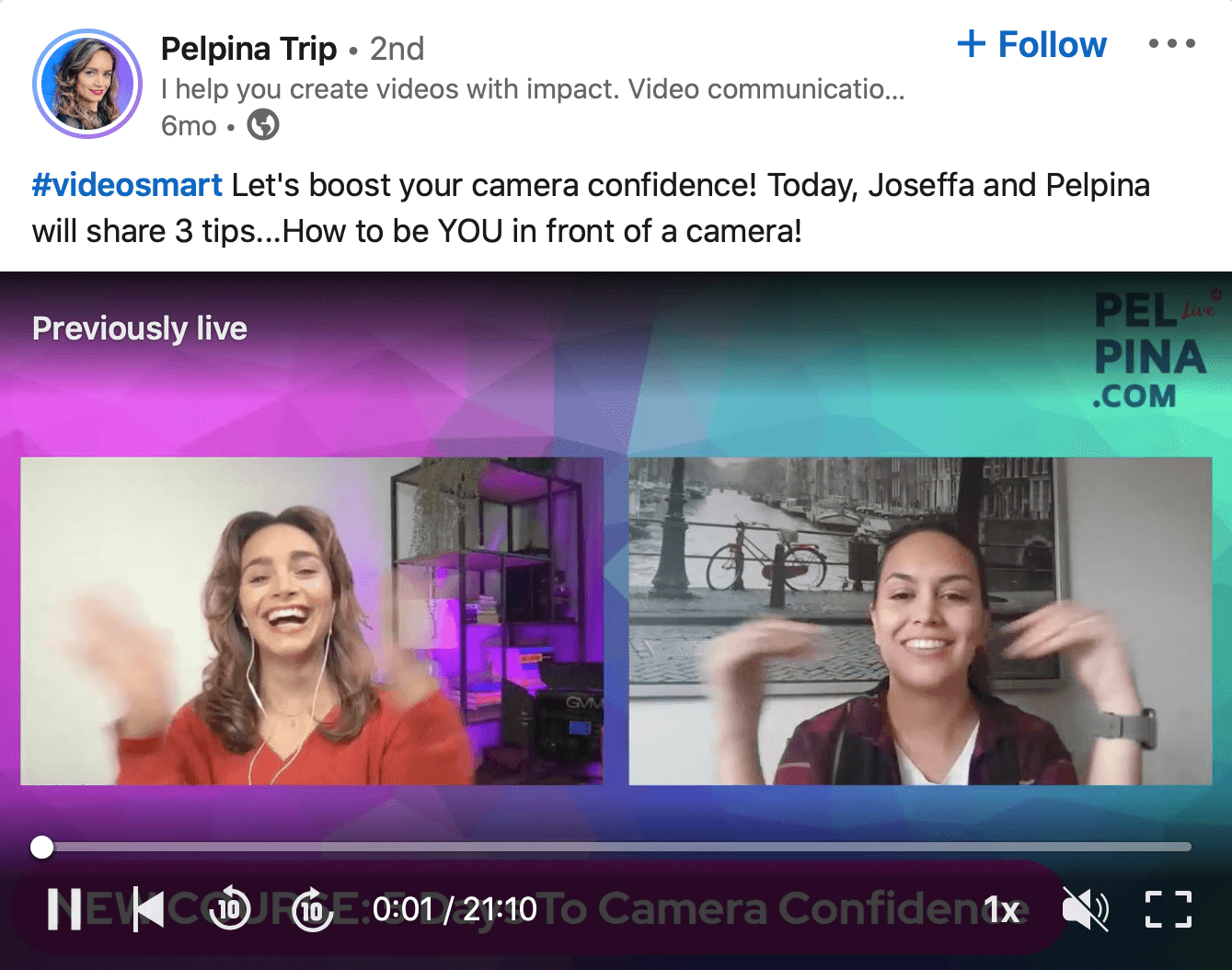
Those first several minutes can always be cut from the final video, or possibly even repurposed into the video at a different spot. Sometimes, the casual, candid conversation that happens before your interview can hold a treasure trove of sound bites. But it also helps put your nerves and your guest's nerves at ease.
#3: Focus on One Thing at a Time to Improve Your Videos
As you show up more on video, you'll get better at it naturally. You'll have fewer tongue twisters and your nervous energy won't hit quite so hard. But if you're looking to speed up the improvement process, there are a few things you can do to ensure you get better with every video you produce.
Start by recording yourself and then watching the video with a kind but critical eye. Remember, we're typically our own worst critics so don't judge your performance in a bad way. Instead, look for certain mannerisms you don't like on video. Perhaps you have a tendency to twirl your hair, touch your face, wave your hands, or tap your foot. If you notice these things in your video, calmly take note of each mannerism you're hoping to improve on.
Then, instead of ripping yourself apart and getting frustrated trying to fix everything at once, focus on just one piece at a time. So maybe in that first video you'll work on calming down your hands so that they're expressive but not flailing. That might take a few videos to get under control. Then once you feel that issue has improved, move on to the next one.
You can also solicit feedback from friends, family members, and colleagues to see if they can add any insights. It could be that the mannerisms you don't particularly like when you watch yourself on video only show up because of that nervous energy and they aren't an actual part of your typical conversation. Or they could be how you normally talk to people and are just a part of your authenticity.
Pelpina Trip is a video expert who helps businesses grow their visibility with online video. She's the author of Video Smart: Make Smartphone Videos Like a Pro and her course is called Five Steps to Camera Confidence. Find Pelpina on LinkedIn at @Pelpina and learn more about her courses and coaching at Pelpina.Academy.
Other Notes From This Episode
- Connect with Michael Stelzner at @Stelzner on Instagram.
- Watch exclusive content and original videos from Social Media Examiner on YouTube.
- Tune into our weekly Social Media Marketing Talk Show. Watch live on Fridays at noon Pacific on YouTube. Listen to the replay on Apple Podcasts or Google Podcasts.
Listen to the Podcast Now
This article is sourced from the Social Media Marketing Podcast, a top marketing podcast. Listen or subscribe below.
Where to subscribe: Apple Podcasts | Spotify | YouTube Music | YouTube | Amazon Music | RSS
✋🏽 If you enjoyed this episode of the Social Media Marketing podcast, please head over to Apple Podcasts, leave a rating, write a review, and subscribe.
Stay Up-to-Date: Get New Marketing Articles Delivered to You!
Don't miss out on upcoming social media marketing insights and strategies! Sign up to receive notifications when we publish new articles on Social Media Examiner. Our expertly crafted content will help you stay ahead of the curve and drive results for your business. Click the link below to sign up now and receive our annual report!
Attention Agency Owners, Brand Marketers, and Consultants

Introducing the Marketing Agency Show–our newest podcast designed to explore the struggles of agency marketers.
Join show host and agency owner, Brooke Sellas, as she interviews agency marketers and digs deep into their biggest challenges. Explore topics like navigating rough economic times, leveraging AI, service diversification, client acquisition, and much more.
Just pull up your favorite podcast app, search for Marketing Agency Show and start listening. Or click the button below for more information.

